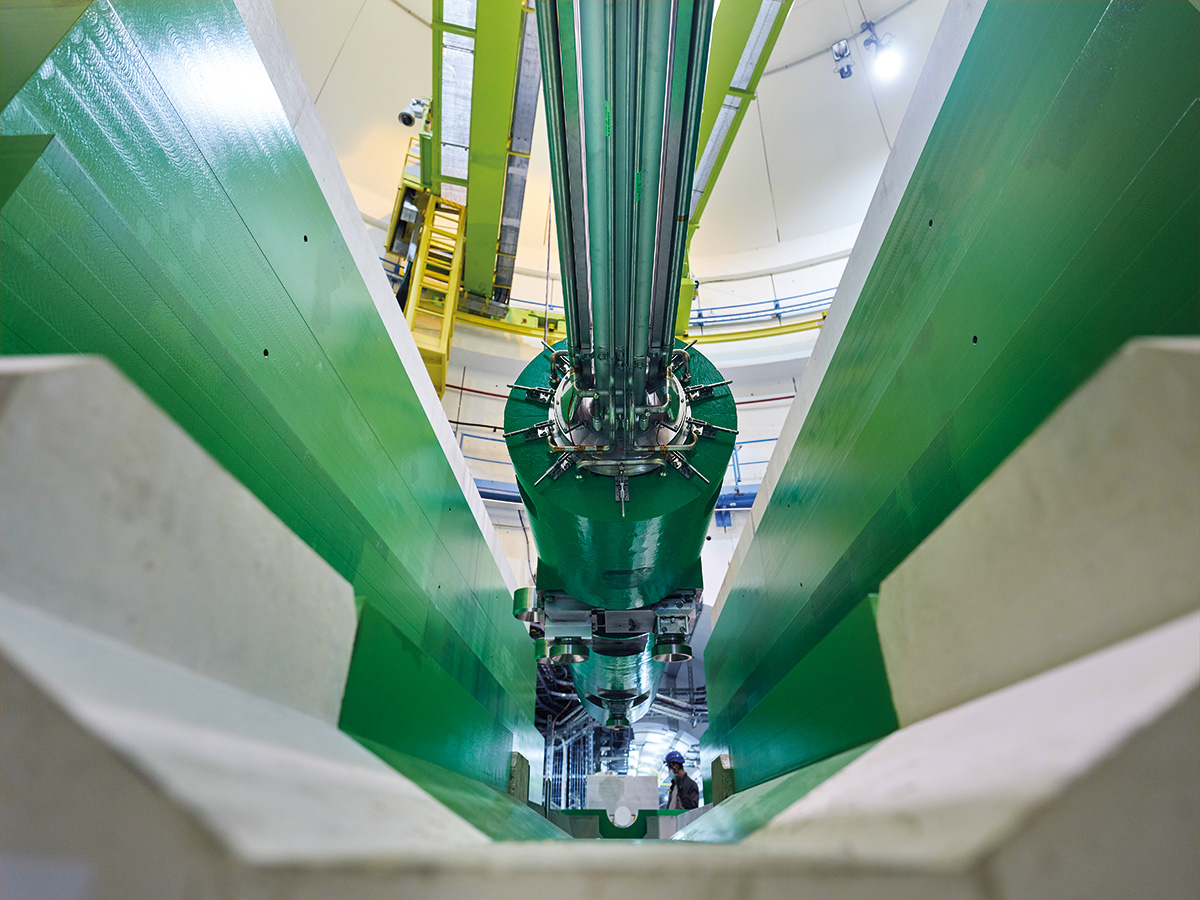Intercepting the beams
From targets to absorbers, beam-intercepting devices are vital to CERN’s accelerator complex. Marco Calviani describes the major upgrades taking place to prepare for the high-luminosity LHC, and the challenges posed by future projects.

Beam-intercepting systems are essential devices designed to absorb the energy and power of a particle beam. Generally, they are classified in three categories depending on their use: particle-producing devices, such as targets; systems for beam cleaning and control, such as collimators or scrapers; and those with safety functions, such as beam dumps or beam stoppers. During the current long-shutdown 2 (LS2), several major projects have been undertaken to upgrade some of the hundreds of beam-intercepting systems across CERN’s accelerator complex, in particular to prepare the laboratory for the high-luminosity LHC era.
Withstanding stress
Beam-intercepting devices have to withstand enormous mechanical and thermally-induced stresses. In the case of the LHC beam dump, for example, upgrades of the LHC injectors will deliver a beam which at high energy will have a kinetic energy equivalent to 560 MJ during LHC Run 3, roughly corresponding to the energy required to melt 2.7 tonnes of copper. Released in a period of just 86 μs, this corresponds to a peak power of 6.3 TW or, put differently, 8.6 billion horse power.
In general, the energy deposited in beam-intercepting devices is directly proportional to the beam energy, its intensity and the beam-spot size, as well as to the density of the absorbing material. From the point of view of materials, this energy is transformed into heat. In a beam dump, for example, the collision volume (which is usually much smaller than the beam-intercepting device itself) is heated to temperatures of 1500 C or more. This heat causes the small volume to try to expand but, because the surrounding area has a much lower temperature, there is no room for expansion. Instead, the hot volume pushes against the colder surrounding area, risking breaking the structure. To reach a sufficient attenuation, due to the high energy of the beams in CERN’s accelerators, we need devices that in some cases are several metres long.
